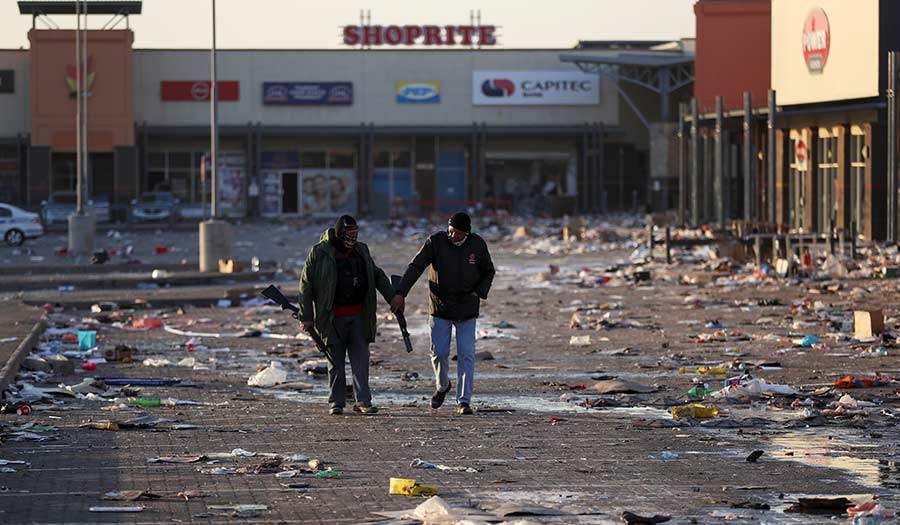 Reuters/Siphiwe Sibeko
Reuters/Siphiwe Sibeko
World News Desk
Learn the why behind the headlines.
Subscribe to the Real Truth for FREE news and analysis.
Subscribe NowLONDON (Reuters) – The unrest that has ripped through South Africa in the past week will force its economy to contract by 3 percent in the third quarter and drag down full-year growth, Wall Street bank JPMorgan said on Friday.
Rioting broke out in several parts of the country, which has Africa’s most industrialized economy, following the jailing of former President Jacob Zuma last week for his failure to appear at a corruption inquiry. The week of looting has destroyed hundreds of businesses and killed more than 100 people.
The flare-up prompted JPMorgan to revise Q3 growth quarter-on-quarter projections sharply lower from a previous estimate of -0.5 percent.
“The wave of violence and looting has swamped Gauteng and Kwazulu Natal (KZN), two provinces that account for over half of South Africa’s GDP,” said Sonja Keller in a note to clients.
“Some knock-on effects in terms of supply-chain disruptions are also increasingly evident as parts of the ports arm of state logistics firm Transnet and the country’s largest crude oil refinery Sapref temporarily shut down operations in KZN, risking delays to fresh produce exports.”
The bank trimmed its full year growth predictions to 4.5 percent from previously 4.9 percent.
On Thursday, Deutsche Bank estimated the riots in South Africa could shave 0.8 percent off economic growth this year while ratings agency Moody’s said the unrest was likely to prove costly in terms of damage to property and would dampen subdued confidence and weigh on broader economic activity.
“There’s a cost, there’s been a lot of damage,” said Ravi Bhatia, director at S&P Global Ratings. “You’ll have to rebuild. There is always a reluctance to invest unless you have security guaranteed.”
Looking further ahead, JPMorgan’s Keller said the social strain and broader discontent could well shape policy making, in particular bolster calls for a re-introduction of the COVID-grant during current mobility restrictions.
JPMorgan expected the central bank to keep interest rates steady for now when policy makers meet next on July 22, but with a hawkish shift in tone.
“A normalization cycle would be more likely to begin in September with a follow-up hike in November, rather than our base case of one hike in November,” Ms. Keller said. “We see the probability of hiking at this meeting at around 30%.”
- World News Desk
- INTERNATIONAL
 UN: World Hunger Was Dramatically Worse in Pandemic Year
UN: World Hunger Was Dramatically Worse in Pandemic Year
More on Related Topics:
- Global Hunger Monitor Says Famine in War-torn Sudan Is Spreading
- Nigeria’s Hunger Crisis Deepens with 33 Million at Risk, Report Says
- Libya’s Instability Will Worsen Further Without a Unified Government and Elections, UN Envoy Says
- U.S. Warns a Famine in Sudan Is on Pace to Be the Deadliest in Decades as the World Looks Elsewhere
- U.S. Hands Over Its Last Military Base in Niger to the Ruling Junta


